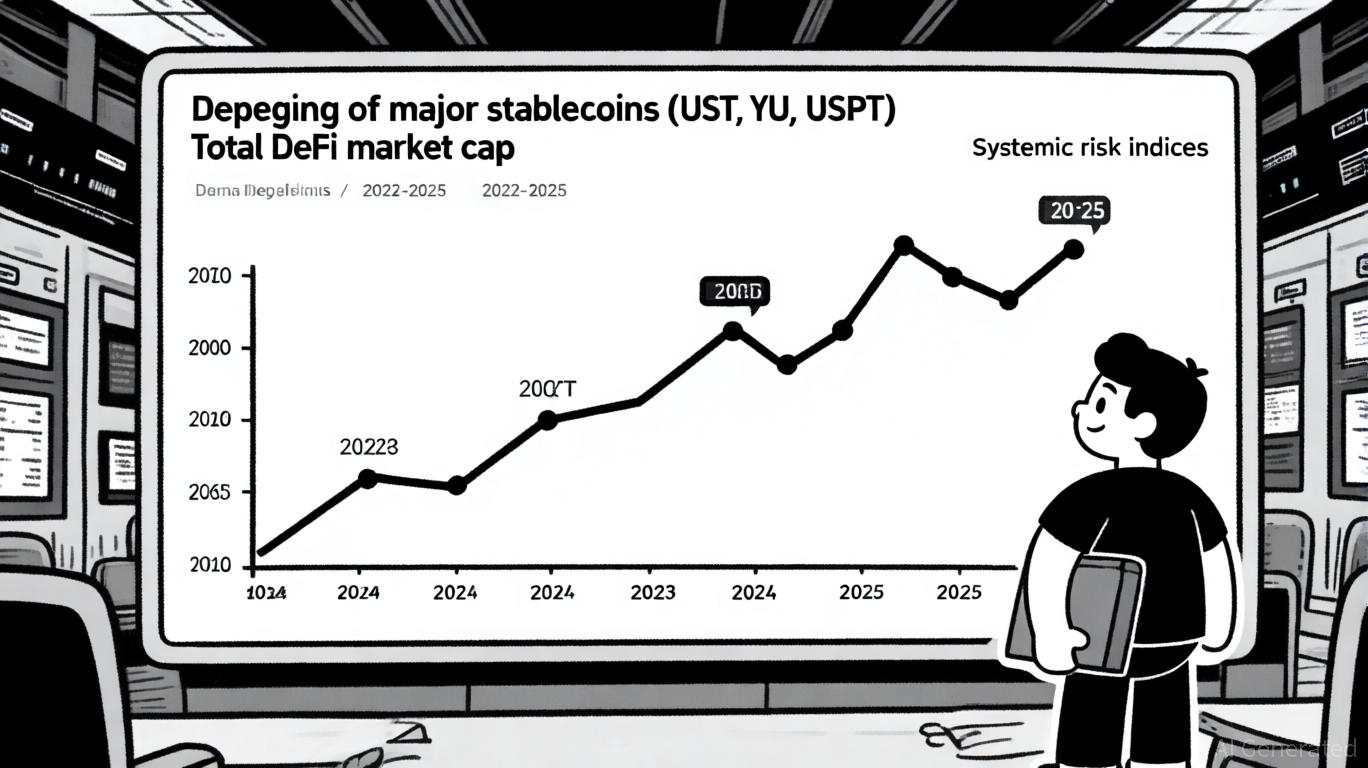
Crypto markets have entered a new era of systemic tail risk, where protocol failures and stablecoin depegs can instantly reshape portfolio exposures across DeFi and CeFi. With Bitcoin (BTC) currently trading at $113,599.00, investor confidence is high – but the headlines tell another story. In Q1 2025 alone, over $2 billion was lost due to exploits on major platforms, according to De. Fi’s latest Rekt Report. The scale and interconnectedness of these events are forcing both institutional and retail investors to rethink risk management strategies in decentralized finance.
DeFi Protocol Failures: Anatomy of Recent Exploits
Protocol failure risk in DeFi is no longer hypothetical. The Bybit exchange breach in February 2025 resulted in a staggering $1.5 billion loss, while Phemex suffered a $37 million exploit just weeks earlier. Even more telling was the May 2025 Cetus Protocol incident on Sui Network, where an attacker manipulated token swap mechanics to drain $260 million from liquidity pools. These cases illustrate not just software vulnerabilities but also the systemic pathways through which losses propagate.
Unlike traditional finance, where circuit breakers and centralized oversight can contain contagion, DeFi’s composability means that one protocol’s failure can rapidly trigger liquidations or insolvency elsewhere. Smart contract bugs, oracle manipulation, and governance flaws remain top vectors for attack – underscoring the need for robust pre-investment assessment (see our guide).
The Domino Effect: Stablecoin Depeg Impact on Crypto Portfolios
The risk posed by stablecoin depegging is both acute and underappreciated. Designed as safe harbors, stablecoins play a central role in collateralized lending and liquidity provision across DeFi protocols. Yet when a widely held stablecoin loses its peg – whether due to market panic or protocol-specific exploits – the shockwaves are immediate.
A depeg event often triggers mass liquidations as collateral values plummet below debt thresholds. This effect is amplified by automated liquidation bots and interconnected lending platforms, resulting in cascading sell-offs that can impact even unrelated assets such as Bitcoin (currently at $113,599.00). Recent research confirms that stablecoin depegs have a statistically significant positive effect on BTC volatility, further destabilizing portfolios during periods of stress.
Notable DeFi Risk Events: Protocol Failures and Depegs
-

Bybit Exchange Breach (February 2025): In February 2025, centralized exchange Bybit suffered a $1.5 billion security breach, exposing vulnerabilities even in major CeFi platforms and impacting user funds and market confidence.
-

Cetus Protocol Exploit (May 2025): The decentralized exchange Cetus Protocol on the Sui Network was exploited for approximately $260 million after an attacker manipulated its token swap mechanism, draining liquidity pools and causing sharp asset losses for liquidity providers.
-

Phemex Exchange Exploit (January 2025): In January 2025, Phemex, a major crypto exchange, faced a $37 million exploit, highlighting persistent security risks across both CeFi and DeFi platforms.
-

Stablecoin Depegging Events: Major stablecoins have experienced depegging incidents due to protocol exploits or market stress, triggering mass liquidations in DeFi lending protocols and amplifying systemic risk across interconnected platforms.
-

Terra-Luna Collapse (2022): The TerraUSD (UST) algorithmic stablecoin lost its peg in May 2022, leading to the collapse of the Luna token and erasing over $40 billion in value, with cascading effects throughout the DeFi ecosystem.
Lessons for Risk Hedging: What Portfolio Managers Can Learn from 2025’s Exploits
The events of 2025 reinforce several critical lessons for crypto portfolio risk management:
- Diversification: Overexposure to any single protocol or asset dramatically increases tail risk.
- Due Diligence: Security audits and active governance matter; past performance does not guarantee future safety.
- Dynamic Risk Assessment: Regularly stress-test portfolios using scenario analysis for both protocol failures and depeg events.
- Real-Time Analytics: Leverage tools like DepegWatch analytics for monitoring systemic risk signals across your holdings.
- Insurance Solutions: Consider protocol-specific insurance or hedging derivatives where available to mitigate catastrophic losses.
A single overlooked dependency can turn a minor exploit into a portfolio-destroying event. Automation is your friend – but only if you understand what you’re automating.
Portfolio managers and individual investors alike are now forced to think in terms of systemic risk chains, not just isolated exploits. The interconnectedness of DeFi means that the failure of a single protocol or the depegging of a major stablecoin can ripple out, affecting asset prices, liquidity, and even the solvency of other platforms. This was evident in the aftermath of the Cetus Protocol exploit and recent stablecoin instability, where cascading liquidations and sudden spikes in volatility were observed across multiple assets, including Bitcoin, which remains steady at $113,599.00 but is never immune to shockwaves emanating from DeFi failures.
Practical Hedging: Mitigating DeFi Portfolio Risk
With these lessons in mind, proactive risk hedging is no longer optional for serious crypto investors. Here are actionable strategies grounded in both quantitative research and recent market data:
- Stress Test Regularly: Use scenario modeling tools to simulate potential depeg events or protocol hacks. Quant frameworks that incorporate volatility stress testing and contagion modeling can help anticipate worst-case outcomes.
- Monitor On-Chain Analytics: Real-time dashboards like DepegWatch provide early warning signals for abnormal flows, collateralization changes, or governance actions that may precede an exploit.
- Adopt Insurance and Derivatives: Where available, protocol insurance products or derivatives (such as depeg protection options) can cap downside exposure from catastrophic events.
- Understand Oracle Dependencies: Many recent exploits have stemmed from oracle manipulation. Review how your protocols source price data and consider reading more about oracle vulnerability risks at this resource.
- Avoid Cross-Protocol Leverage Loops: Be wary of recursive borrowing/lending strategies across interconnected protocols, these amplify systemic tail risk when one leg fails.
The evolution of DeFi insurance is particularly noteworthy. While still nascent compared to traditional finance, on-chain insurance solutions are rapidly gaining traction as a means to hedge specific protocol exposures. However, coverage limits, claim processes, and counterparty risks must be carefully evaluated before relying on these products as a primary safeguard.

Looking Ahead: Building Resilient Crypto Portfolios
The landscape is evolving fast, but so too are the tools available for managing protocol failure risk in DeFi. As digital asset adoption grows and prices like Bitcoin’s current $113,599.00 level become new benchmarks for institutional inflows, robust risk controls will separate sustainable portfolios from those exposed to existential threats.
The best defense remains a combination of rigorous due diligence, active monitoring with analytics platforms such as DepegWatch, strategic diversification, and targeted use of insurance or derivatives where appropriate. For retail investors seeking practical steps to reduce their exposure to real-world DeFi hacks and exploits, consider reviewing our guide on best practices here.
The lesson from 2025’s high-profile incidents is clear: systemic risk in crypto cannot be eliminated but it can be intelligently hedged, if you know where to look and act decisively when signals emerge.






